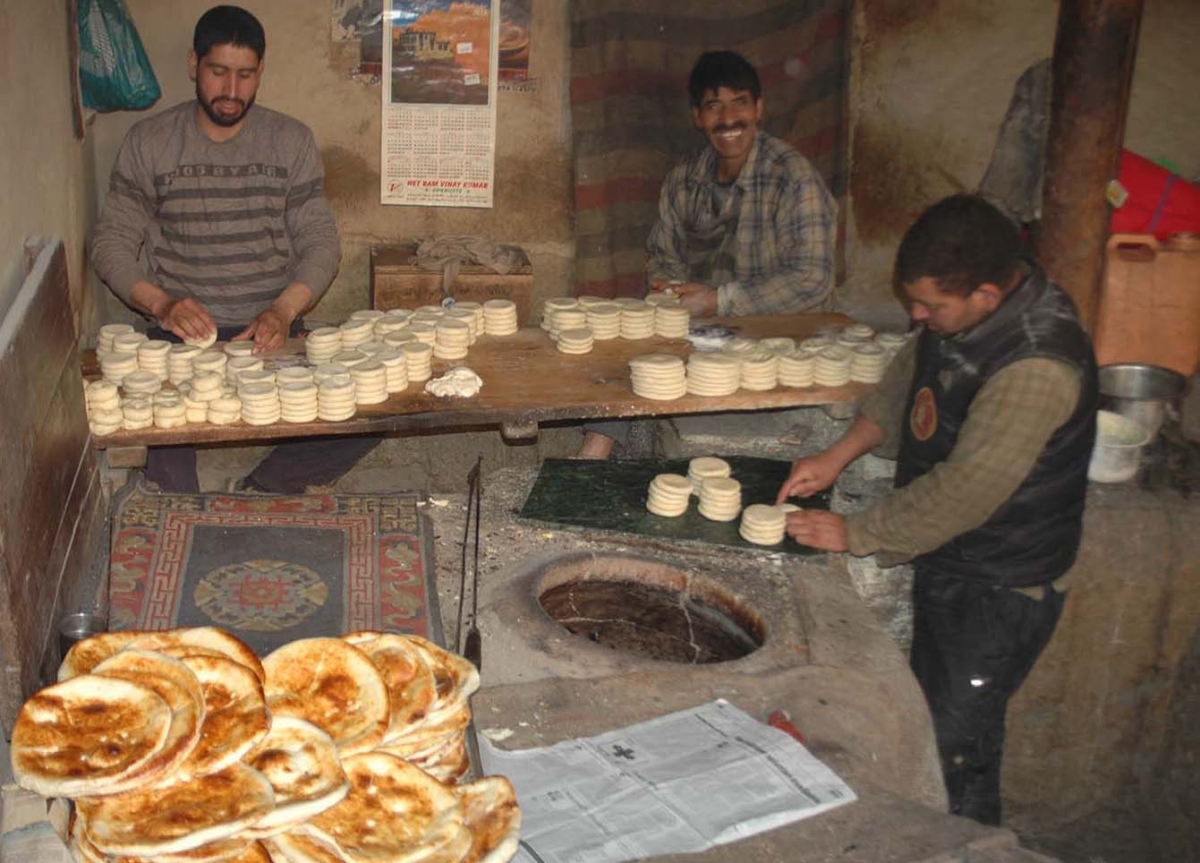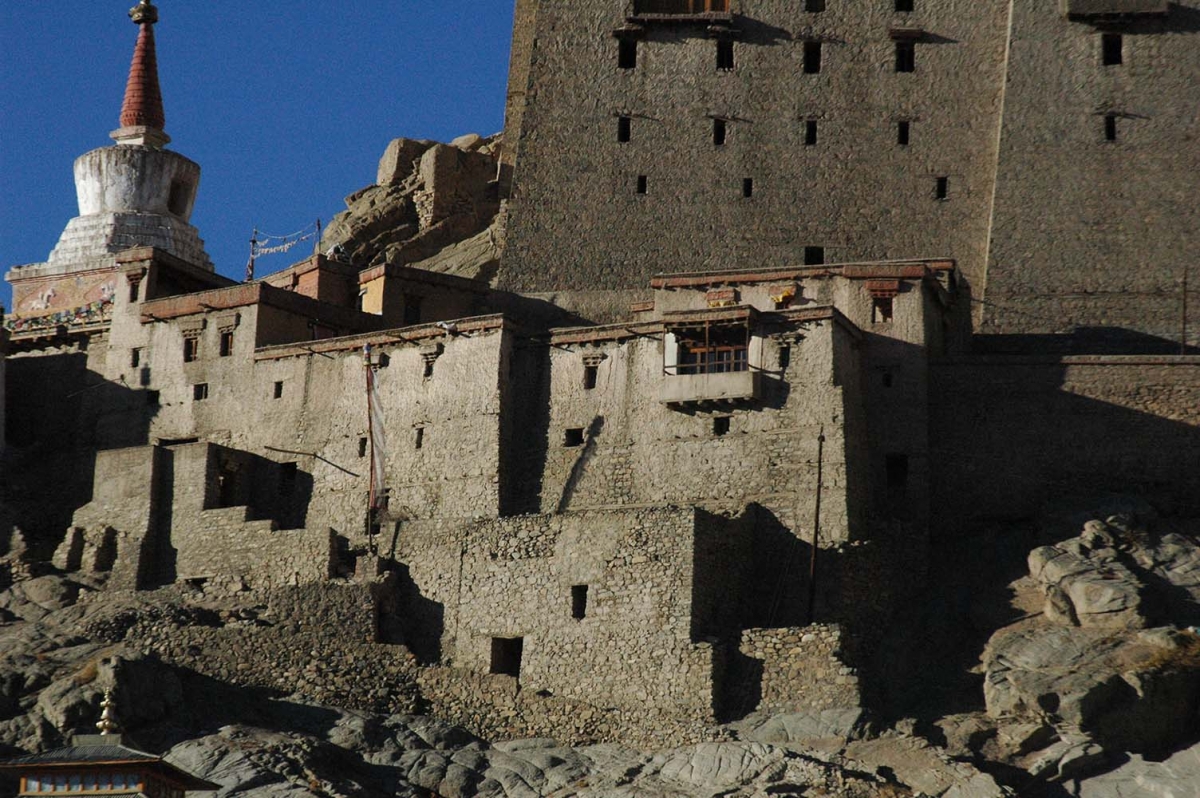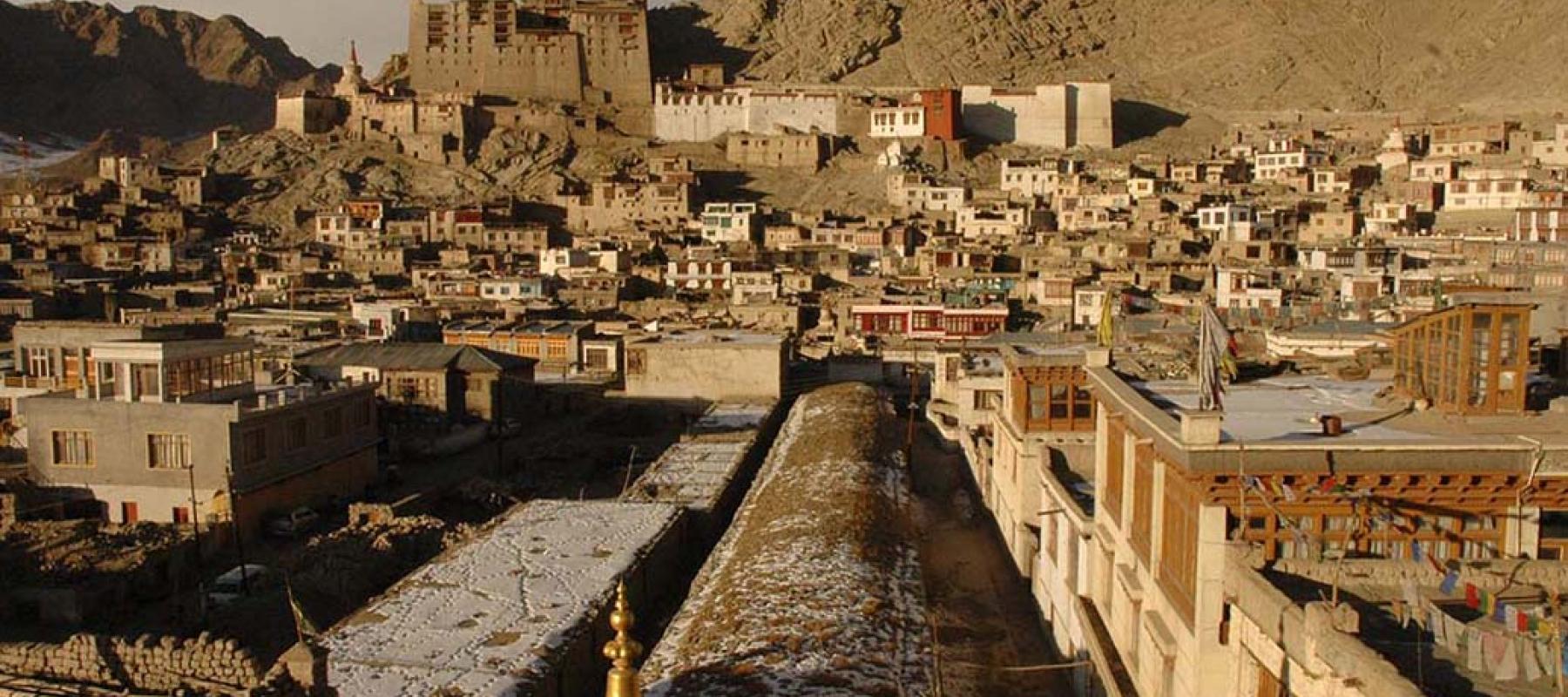Cold desolate mountains, treacherous roads, pristine high-altitude lakes, and pretty mountain villages -- Ladakh has always intrigued travellers from across the world. Its discovery as a tourist destination in recent times can be credited to the movie 3 Idiots. Ever since, it has seen a surge of tourism which has proved both a bane and a boon for this isolated region.
However, it is not just its spectacular trans-Himalayan topography that gives Ladakh its charm. It is also its largely undocumented tangible and intangible heritage that is waiting to be discovered. Beyond its beautiful monasteries and shrines, lie forts and temples, historic streets and joints, authentic food outlets and bakeries, and the various traditions of Ladakhi culture. Join us as we discover a part of it, with a unique heritage walk organised by Sahapedia through its outreach programme, India Heritage Walks, on February 28th.
Traversing through the Old Town of Leh is what this walk primarily entails. Leh is the capital of the Himalayan kingdom of Ladakh. It is home to the famous Leh Palace, which housed Ladakh’s royal family and was built in the same style and time as the Potala Palace of Tibet. Leh has been an important historic site for trade in the Himalayan region. The city, especially the Old Town of Leh, hides many secrets and stories of an interesting past that never made it to our history books.
The Old Town of Leh is a testimony to the architectural heritage and socio-cultural history of Ladakh, bearing influences that demonstrate links to Central Asia, Tibet and Kashmir. Covering an area of roughly 24 acres, it is situated behind Leh’s main market. Its heritage needs to be preserved, and its culture, documented. It was also added to the World Monuments Fund's list of the 100 most endangered sites due to increased rainfall from climate change, rapid urbanisation, commercialisation and settlement patterns.
By way of sensitising participants and spreading awareness, this is what this walk aims to do. It begins at the top of Chutay Rantak, the quaint Kashmiri bakers' street where the traditional water mills were located. Formerly called the Chuskor Rantak that refers to a traditional mill for grinding grain, it was built by the Baltis in the early 17th century. This site is credited to have supplied flour to the residents of the town of Leh, including the bakeries.

We will then walk through the bakers’ street, observing the bakers at work. Feel the cool nip in the air and take in strong whiffs of the fresh Khambeer or the Ladakhi bread being baked. Stir up a conversation with the bakers about the local cuisine and do not forget to pack some bread.
The area also boasts of a 400-year-old Lhar Chhang tree, historically known as Gtsug Tor, derived from the name of a local deity. The tree is said to have been planted by Stagsang Raspa, the founder head lama of Hemis Monastery. Currently, it is maintained by the Sikh community of Leh who have renamed it Datun Sahib (referring to Guru Nanak’s toothbrush).
The walk will then turn towards the main west entrance gate of the Old Town of Leh, called Sta-go. This gate is beautifully placed above a stupa. Walk under the stupa that adorns the gate and enter the Old Town and step into the past. The scene changes vividly as one walks through the labyrinthine narrow pathways, passing old houses with intricate woodwork, places of worship and forgotten ruins. Each space has an interesting narrative from the past as well as an account of its contemporary usage.
From the oldest cinema house in Leh, to the Chang-Gali where local beer would be sold by women, to shops selling everything from Ladakhi dresses to fresh meat, the old Town of Leh is a world within itself. There are prominent temples such as the Mahakala Temple on Namgyal Tsemo (Victory Peak) above the palace, Guru Lakhang (Padmasambhava Temple) and Chenrezig Lhakhang or Avalokitesvara Temple, mosques like the Jama Masjid, and exquisite monasteries coexisting within the town, showcasing its religious diversity.

The walk will also give us an opportunity to experience the vernacular architecture of the Old Town of Leh by observing the old houses. Interestingly, the only documentation available of these housing patterns is through folk and personal narratives and most importantly, music. The houses, made of mud and wood, were given a space based on the residing family’s power and influence. Each and every house in the locale has a fascinating history that will be narrated by the walk leader, Tashi Morup.
Tashi Morup is Projects Director of the Ladakh Arts and Media Organisation, Leh, and his work largely focuses on the media, including article writing, photography and film. His areas of interest concerning Ladakh include the environment and the impact of development and tourism, as well as the spirituality and music of the region. A vivacious storyteller, he has recently completed a film on the music and cultural spaces of the Old Town, Leh. He has published a book to commemorate the centenary celebrations of the 19th Kushok Bakula Rinpoche, titled Monk, Politician and Statesman (2017).
Come discuss the myths, folklore and music of Ladakh as you experience the Old Town of Leh with Tashi who will speak about the several important and colourful personalities who lived in the Old Town and their contributions to the region. Come, experience Ladakh like never before.
This guided tour is free.
For more information and registration, click here.
To read more about Leh’s interesting heritage on Sahapedia, click here.
Feature Image Courtesy: View of the Old Town of Leh. Photograph by Tashi Morup, 2014; courtesy LAMO Visual Archive //https://www.sahapedia.org/the-old-town-leh-ladakh-0
References
https://www.sahapedia.org/the-old-town-leh-ladakh-0
https://en.wikipedia.org/wiki/Leh
https://web.archive.org/web/20080706022236/http://www.worldchanging.com/archives/007682.html

